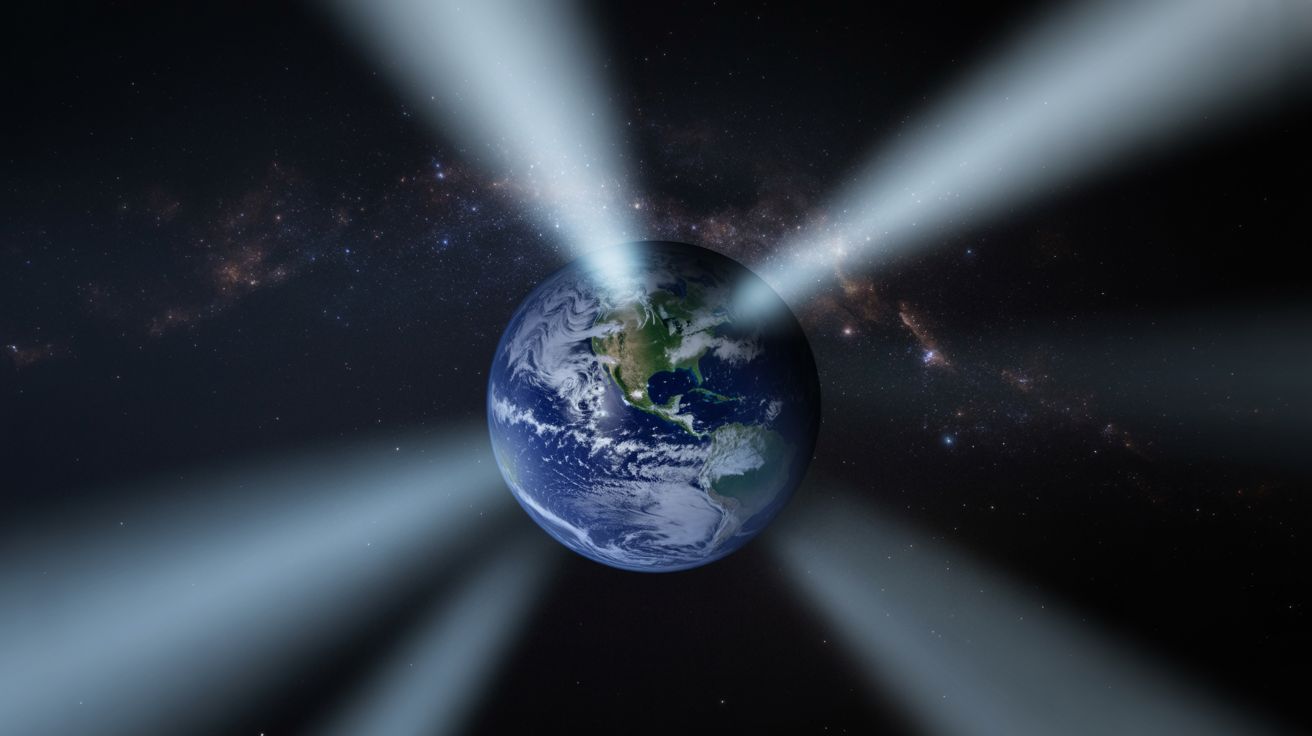👽 Without realizing it, we're broadcasting our location to potential extraterrestrial civilizations
Published by Cédric,
Article author: Cédric DEPOND
Source: Royal Astronomical Society
Other Languages: FR, DE, ES, PT
Article author: Cédric DEPOND
Source: Royal Astronomical Society
Other Languages: FR, DE, ES, PT
Follow us on Google News (click on ☆)
This research, presented at the Royal Astronomical Society's annual meeting, examines how electromagnetic leaks from our technology are perceived from space. By simulating these wave propagations, scientists measured their range and visibility for potential civilizations at stellar distances.

Signals detectable up to 200 light-years away
Civilian radars, like those at airports, emit a combined power of 2×10¹⁵ watts. This intensity would allow extraterrestrial telescopes similar to the Green Bank Telescope, if they exist, to detect them within a 200 light-year radius.
Military systems, more directional, produce distinctive patterns. Their emissions reach 1×10¹⁴ watts in certain directions, creating an identifiable artificial signature. These variations could reveal our technological level.
According to researchers, these unintentional leaks constitute a universal "technosignature." Any civilization developing radar and aviation would likely emit comparable signals.
A new approach for extraterrestrial research
The study proposes a novel method to detect advanced civilizations. Instead of searching for intentional messages, it suggests observing involuntary technological emissions from other planets.
Simulations include nearby stars like Barnard (6 light-years) and AU Microscopii (32 light-years). Results show that a planet's rotation creates recognizable temporal patterns, enhancing detectability.
This method also opens other perspectives. It helps assess our technology's impact on the space environment and design less intrusive systems for future astronomical research.
Going further: What's the actual range of our emissions?
Proxima Centauri b, the closest habitable exoplanet, lies 4.2 light-years away. Our radar signals have been reaching it for decades. A local civilization with comparable technology would have certainly detected them already.
Our emissions could be detected up to 200 light-years away, an area containing thousands of stars. Among them, several dozen host planets in habitable zones, potential targets for intelligent life searches.
However, the study notes detection remains dependent on extraterrestrial instruments' sensitivity. Only civilizations with powerful telescopes could spot us at such distances.